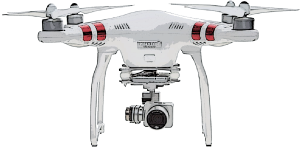You are viewing our site as an Agent, Switch Your View:
Agent | Broker Reset Filters to Default Back to ListNew Drone Rule Affecting the Real Estate Industry
September 19 2016
 Small Unmanned Aircraft Systems (sUAS), most commonly known as drones, are making an impact in many aspects of life. In the past, being able to use drones for commercial purposes, including in the real estate industry, had been complicated and limited to operators who had an FAA Section 333 exemption.
Small Unmanned Aircraft Systems (sUAS), most commonly known as drones, are making an impact in many aspects of life. In the past, being able to use drones for commercial purposes, including in the real estate industry, had been complicated and limited to operators who had an FAA Section 333 exemption.
That just changed. The first operational rule from the Department of Transportation's Federal Aviation Administration for routine commercial use of small unmanned aircraft systems became effective August 29, 2016.
If you have been following the development of drones for commercial use, here are three significant changes to note with this ruling:
- A pilot's license is no longer required.
- A section 333 exception is no longer required.
- A remote pilot certificate with a sUAS rating from the FAA is required, if you don't have a pilot's license.
Overall, with this rule, the FAA is making drone technology more accessible to the commercial sector. Real estate is one area where anticipation and expectation is high because with drones, one can take breathtaking video footage and make a distinguishable impact in the marketing piece of the property.
How are drones being used today in real estate?
Mainly, drones are used to capture aerial videography. The aerial footage is woven into video footage captured from the ground and crafted into a marketing piece. It is then used to showcase the property and represent the essence of the lifestyle in the area. Here are some examples:
Why does it work?
Out-of-state investors, international buyers, and people accustomed to shopping online can have a better sense of the property when video is used wisely, as compared with marketing that employs only still photography.
Is it just a fad in the real estate industry?
Visual imagery is compelling. And effective. Statistics show persuasive reasons why video dominates in marketing today, and why it is expected to continue to be an important tool in the future. Innovators are finding ways to use the technology better each time, so even if you are not an 'early adopter,' we encourage you to keep your eye on this trend and find an appropriate entry-point for your business.
DIY? Three things to consider.
Drone video can be part of your overall video strategy. It adds drama. It adds flair. And because beautiful footage can be shot, it can be a great asset to the video. So when determining if this is something you want to do yourself, consider this...
1. Video on the ground
The length of the aerial footage you use should depend on what you wish to showcase. For example, if you are planning on using it to market the homes you are selling, you won't only need to take aerial video, you will also still need to film inside the home to fully capture the property. Have a plan for that part as well.
2. Editing the video
Multiple video sources means needing to edit all the video footage together, to add background music and maybe even to add special effects, such as adding text that shows how prospective clients may contact you. Check that you have the hardware and software for editing both the audio and video.
3. Cost
Research carefully the drones that are equipped to give you the professional video your brand deserves. Keep in mind that these drones will be for the professional use of your business – not for recreational purposes. Aside from the drone itself, research what other gear you will need – memory cards, propeller guards, landing gear, etc.
Hire a crew?
Not everyone will be prepared to invest the time and money needed to create a good marketing video personally – with drone technology or not. Luckily, it's not necessary.
Do you typically hire a professional photographer? What about an interior designer for staging? If you do, hiring a professional real estate videographer with drone technology may be a good option for your business. All the benefits, none of the extra work.
You can always get a drone for your recreational time and fly it for the fun of it, if you want. Here are the FAA guidelines for the recreational use of drones.
Where can I learn more?
- We really like this website, which lists a lot of useful information about drones in the real estate industry
- Also, NAR took the FAA rule and broke it down into FAQs: NAR's FAQ for Small Unmanned Aircraft Rule
- And for fun, check out the Top 5 Drone Fails
To view the original article, visit the Tech Helpline blog.









